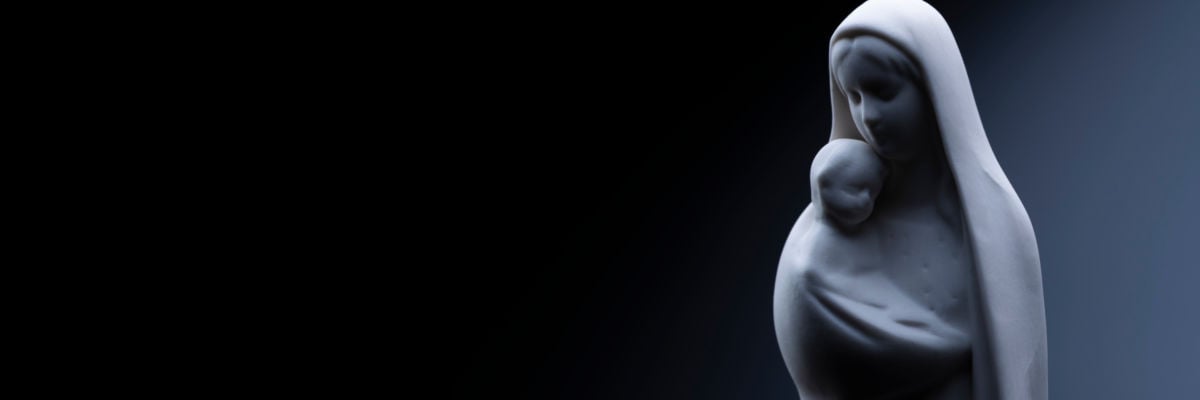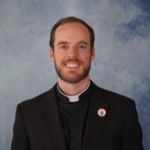
When I began seminary, my biggest question was, “Where in the Bible does it teach that Mary was immaculately conceived?” I thought it had to be there . . . somewhere . . . anywhere. Maybe it was in the original languages, but not in the English translation.
I searched until I found a strong answer—but that answer was not primarily from the Bible. Rather, I found it in the writings of St. John Henry Newman.
Newman didn’t say, “The Marian dogmas aren’t provable with Scripture alone.” But what he did do is explain the most relevant Marian dogma to his time (the Immaculate Conception), and he didn’t use Scripture as the primary source to do it. Newman’s primary source was the writings of the first Christians, whom he called the Fathers.
Among scholars who study Newman, this is a famous quote:
The Fathers made me a Catholic, and I am not going to kick down the ladder by which I ascended into the Church. It is a ladder quite as serviceable for that purpose now, as it was twenty years ago. Though I hold, as you know, a process of development in apostolic truth as time goes on, such development does not supersede the Fathers, but explains and completes them.
To put it bluntly, Catholic teachings about Mary are hotly contested by our Protestant brothers and sisters. They think we worship Mary as God. We have to understand well what the Catholic Church actually teaches about Mary so that we can defend our beliefs. So let’s see how Newman’s approach can help us shed some light.
There are four Marian teachings (also known as dogmas) that Catholics are required to believe about Mary:
- Mary was a perpetual virgin: she remained a virgin her entire life
- Mary is the Mother of God (meaning that she gave birth to Jesus, who is fully God and fully man).
- The Immaculate Conception: Unlike the rest of humanity, Mary was conceived without the stain of original sin. (Again, obviously, Jesus was not conceived with original sin either because he is God, and sin has nothing to do with God.)
- The Assumption: At the end of her life on earth, Mary was assumed into heaven, body and soul. It parallels Christ’s ascension into heaven.
Are these teachings taught in the Bible? Scripture certainly does not contradict these doctrines, but it does not teach them explicitly, either. Nowhere does the Bible say in plain black and white that Mary was a virgin her entire life. Although the angel Gabriel’s address to Mary as full of grace (Luke 1:28) can point us in the direction of the Immaculate Conception, it does not prove it (28). As for the Assumption, if I were a Protestant, I might hesitate to accept the argument that Revelation 12 proves that Mary was assumed into heaven. Even Mary’s divine maternity, though provable from Scripture, had to be officially defined in the Council of Ephesus in 431.
If Scripture does not prove what the Catholic Church teaches about Mary, then why do we believe these teachings? We believe them because the earliest Christians did not adhere to sola scriptura. Rather, they believed in Apostolic Tradition as well.
Scripture itself teaches that the Bible is not the only authority (or the highest authority). St. Paul states in 2 Thessalonians 2:15 that the people of God are to hold firm to Scripture (what he wrote) and Tradition (what he taught them by word of mouth): “So then, brethren, stand firm and hold to the traditions which you were taught by us, either by word of mouth or by letter.” Therefore, Paul is not a follower of sola scriptura, either: for him, Scripture and oral tradition carry an authority independent of each other.
The first Christians clearly felt likewise:
St. Basil the Great wrote, in 375,
Of the dogmas and kerygmas preserved in the Church, some we possess from written teaching, and others we receive from the tradition of the Apostles. . . . In respect to piety both are of the same force . . . were we to try to reject unwritten customs as having no great authority, we would unwittingly injure the gospel in its vitals. . . . For we are not content with those words the apostles or the gospel has recorded, but we say other things also . . . and we regard these other words, which we have received from unwritten teaching, as being of great importance.
St. Epiphanius of Salamis explicitly argued against the principle of scripture alone when he wrote (between 374 and 377),
It is needful also to make use of Tradition, for not everything can be gotten from Sacred Scripture. The holy apostles handed down some things in the Scriptures, other things in Tradition (Panacea Against All Heresies).
Expounding on 2 Thessalonians 2:15, which we quoted above, St. John Chrysostom wrote (between 398 and 404) that the apostles
did not hand down everything by letter, but there was much also that was not written. Like that which was written, the unwritten too is worthy of belief. So let us regard the tradition of the Church also as worthy of belief. Is it a tradition? Seek no further.
Martin Luther thought that St. Augustine was the first to be sola scriptura. Luther wrote, “Herein I follow the example of St. Augustine, who was, among other things, the first and almost the only one who determined to be subject to the Holy Scriptures alone.” But Augustine, regarding traditions kept throughout the whole church (400), wrote in his letter to Januarius,
In regard to those observances which we carefully attend and which the whole world keeps, and which derives not from Scripture but from Tradition, we are given to understand that they are recommended and ordained to be kept, either by the Apostles themselves or by plenary councils, the authority of which is quite vital in the Church.
Now that we have seen that Scripture and Apostolic Tradition both carry teaching authority, we can better understand why these four Marian teachings are not explicit in the Bible. They come to us through Apostolic Tradition and developments therefrom.
There is a need for a deeper understanding of St. John Henry Newman’s contributions to the field of Catholic apologetics and Mariology, especially in his Letter to Pusey and his Essay on the Development of Christian Doctrine. Without them, we can too easily fall into the trap of trying to prove Catholic Marian teachings from Scripture alone. In fact, these teachings cannot be adequately defended without Apostolic Tradition or the infallible teaching authority of the Catholic Church. However, with them, what the Catholic Church teaches about Mary is defendable and provable.



